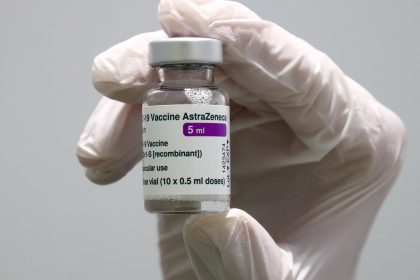Food Seen as Best Medicine for Chronic Diet-Related Diseases

SANTA MONICA, Calif. — We Americans are a funny bunch when it comes to health. Despite widespread prosperity and the fact that our farmers feed most of the rest of the world, our life expectancy is plummeting and we suffer from a plethora of chronic, diet-related diseases that drive up health care costs for everyone.
The incidence of diabetes, cancer, heart disease and stroke continues to rise across the U.S. with six in 10 adults suffering from at least one morbidity, a disproportionate number of them being Black, Latino or Native American.
Recent studies show these chronic conditions and others cause roughly 1.7 million deaths annually, while being responsible for near 90% of the nation’s $4.1 trillion in annual health care costs.
However, a new report from the Milken Institute, the nonpartisan economic think tank headquartered in Santa Monica, California, suggests a commonsense approach — “Food is Medicine” prescriptions — could easily reverse these woeful outcomes.
According to its proponents, this so-called “FoodRx” can be tailored, like most other prevention and treatment programs, to fit an individual’s needs, while also addressing broader issues like food insecurity.
The question the Milken Institute is seeking to answer is how we, as a society, overcome the data, technological and financing challenges that are currently hindering FoodRx’s integration into the current U.S. health care system.
To do that, it has established Feeding Change, a group of experts dedicated to activating social and financial capital, engaging policymakers and industry leaders, and convening key stakeholders to build a more nutritious, sustainable, resilient and equitable food system.
“Food is Medicine is one of the key priorities of our work,” said Holly Freishtat, senior director of Feeding Change and one of the new report’s authors.
“We know the benefits of Food is Medicine. They’re clear and they’ve been increasingly leveraged by the health care community to prevent, treat and manage diet-related health conditions,” she continued.
“What’s been an issue is that Food is Medicine prescriptions, or FoodRx, have been slow to scale and keep pace with the rising disease burden we’re facing,” she said.
To give the movement energy, Feeding Change formed a Food is Medicine task force composed of insurance companies and health care providers, nearly a dozen retailers, a team of nonprofits and academics, as well as companies that are already active in the Food is Medicine space.
Their charge was to review existing research, funding, technology and policies to identify ways to speed up the process of transitioning from pilot programs to large-scale implementation.
The report, which Freishtat wrote with Maressa Brennan, Ivy Hsu, IIana Moreno and Athena Roesler, is its first work product.
Meeting Nutritional Needs Over Time
So what, you might ask, is a Food is Medicine prescription? Freishtat said in practice it is no different from any other prescription one might receive from their doctor — only instead of going to a pharmacy for meds, a patient would go to their local participating supermarket or food delivery company to purchase their medically tailored groceries or even medically tailored meals.
Over the past decade, Food is Medicine pilot programs and policies have multiplied as evidence of their efficacy.
And a major boost came in September 2022, with the White House Conference on Hunger, Nutrition and Health, which attendees said highlighted issues around nutrition security and equity, as well as on the nascent efforts to integrate food into the health care paradigm.
Despite these advances, Freishtat said U.S. food and health care programs remain largely siloed from one another and rarely complement each other in comprehensive and suitable ways.
“Stakeholders say there are a number of reasons for this,” she continued. “One is that there’s a lack of an overarching federal policy in this area. Others they cite include insufficient technological and data efficiencies, and a dearth of sustainable funding.”
Anticipating a question, Freishtat noted there are federal programs, like the Supplemental Nutrition Assistance Program or SNAP, that serve as critical safety nets for low-income families and have helped reduce food insecurity.
But in the same breath, she said there’s a big difference between food security, emergency food programs and the like, and nutritional security.
“With food security, you’re making sure people have enough to eat, and that is important; nutritional security is taking that to another level, ensuring people have a healthy diet that will support good health,” she said.
In addition, FoodRx programs require a referral or sign-off from a physician or other health care professional or a health plan.
Tech Has Role to Play in Streamlining Processes
Over the course of their examination, the Food is Medicine task force identified a number of areas in which technology and data must play a core role in such a program’s ecosystem.
One of these is curation and delivery of groceries or meals.
The report cites examples such as FarmboxRx in New York, which matches Medicare and Medicaid members to a registered dietitian in the patient’s network.
The dietitian then curates home-delivered FoodRx packages and works with the member, according to the nature of their condition and dietary needs or preferences.
Another example is NourishedRx, in Connecticut, which matches members to “clinically appropriate food,” including groceries and prepared meals.
The task force also concluded fintech can play an important role by consolidating material such as pharmacy cards, insurance cards and methods of payment, into a single digital wallet for better organizing funds and keeping track of balances.
It cites Lynx, a Boston-based firm, which enables consumers to access their health care payment, banking and investments in one app.
The task force also cited a need for so-called “middleware” technology solutions, software that can bridge otherwise incompatible computing systems, applications and databases.
“This is especially helpful when accounting for cuisine preferences, specific medical needs, and identifying the availability of accessible, affordable and patient-tailored products,” the report says.
Then, of course, there’s the need to document health outcomes, technologies that may have to analyze large datasets and quantify health food spending resulting in positive health outcomes.
All of this will take steady and reliable funding.
To date, what FoodRx funding there has been has come primarily from two public sources, the report says. These are federal insurance programs, like Medicare and Medicaid, and grants.
The problem with relying on these over the long term is that federal funding streams are vulnerable to a number of factors. These include changes of administration and congressional majorities, prioritization of issues, the legislative process itself, and time-dependent policy cycles like the one associated with the farm bill, which must be renewed every five years and which is currently the subject of hearings on Capitol Hill.
To guard against those uncertainties, the report says, a number of states and health insurers have taken advantage of special flexibility and exception mechanisms to move FoodRx forward, such as Medicaid’s pilot demonstration waivers and the Medicare Advantage regulatory guidance.
Then there’s the Gus Schumacher Nutrition Incentive Program, called GusNIP for short, which is administered by the Department of Agriculture. This is the largest federally funded grant program, providing incentives to low-income participants to help them buy fruits and vegetables.
The task force points to this grant program as an example of an existing program providing proof of concept for the direction in which they want to go.
The report cites data from the Gretchen Swanson Center for Nutrition in Omaha, Nebraska, which shows fruit and vegetable intake is higher among nutrition-incentive recipients than the average U.S. adult, and that among produce prescription recipients, food security and self-reported overall health status are improving.
However, the task force says funding for programs supported by the center is currently limited to research and development, and is insufficient for starting or scaling the latest FoodRx programs.
Barriers and Proposed Solutions
In the end, the Milken Institute effort identified four chief barriers for expanding FoodRx programs across the country.
These include a lack of supportive policies and regulations, a disparate and uncoordinated evidence base, inconsistent and short-term funding pathways, and data and technology systems that inhibit rather than promote collaboration and communication.
But the task force didn’t just throw up their hands in despair. In fact, they identified a number of possible solutions to what might be called the current lethargy in fomenting FoodRx programs.
These solutions include undertaking a comprehensive mapping of the entire Food is Medicine landscape, “One that links all the pieces, is necessary to identify gaps and opportunities for improvement in each component of these programs,” Freishtat said.
“One of the issues we identified is that many existing FoodRx interventions map out only specific programs and leave certain stakeholders out altogether,” she said.
As a next step to follow up on the Milken paper, the task force is recommending that an “industry leader” should assemble a working group to complete a mapping process that will visualize the connections between everything from legislation and reimbursement to prescription renewals and adjustment.
The report also recommends that stakeholders begin to develop a standard language and metric for the FoodRx space, something it describes as “an important first step” to reducing confusion and getting the many different kinds of stakeholders involved in a FoodRx project on the same page.
Another proposal — one of several in the report not detailed here — is that a Food is Medicine financing fund be developed through public-private partners.
“Early public-private partnerships helped finance large-scale projects such as infrastructure improvements to roads, buildings and hospitals,” the report states. “Over time, as needs and incentives have evolved, this innovative tool has been applied to deploy capital in areas where private-sector technology or specialization is financed in part with government guarantees.
“The federal government already participates in a prominent public-private partnership in health food access that has laid the groundwork for broader implementation: the USDA’s Health Food Financing Initiative,” the report continues.
Through the initiative, federal funding is distributed to local entities and their sponsoring organizations through community development finance institutions in targeted communities.
“This financing partnership has provided much of the capital allocated in health food access over the past two decades. The impact … particularly among small- and medium-sized businesses, cannot be understated,” the report says.
As for activity at the state level, the task force cites the California FreshWorks Fund, a loan fund created within a public-private partnership whose parties include the federal and state government, private investors, nonprofits and food industry business associations.
“The fund aligns with HFFI and provides financing for community-based food providers that offer nutrition incentives to SNAP beneficiaries,” the report says.
The report concluded by saying without public, private and nonprofit collaboration, FoodRx programs “will continue to operate in an ad hoc and siloed fashion.”
“As the White House call to action suggests, now is the time for creative solutions,” it continued.
“Coordinating efforts around the cohesive strategy detailed in this report can help advance the market, capitalize on the current momentum around food as medicine interventions, and allow more patients to receive the continuous and comprehensive care required to treat, manage and prevent diet-related chronic disease.”
Dan can be reached at [email protected] and at https://twitter.com/DanMcCue

























